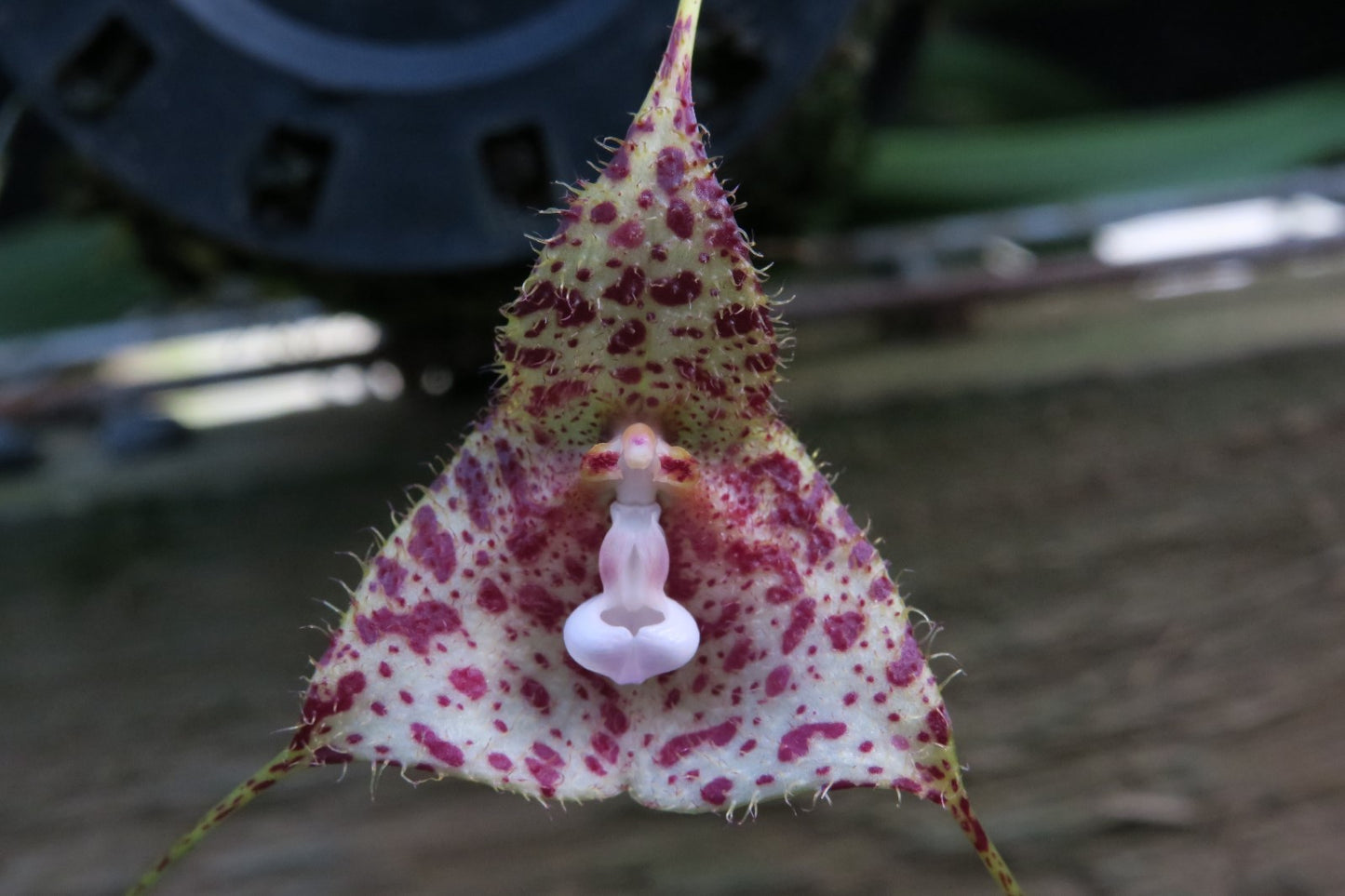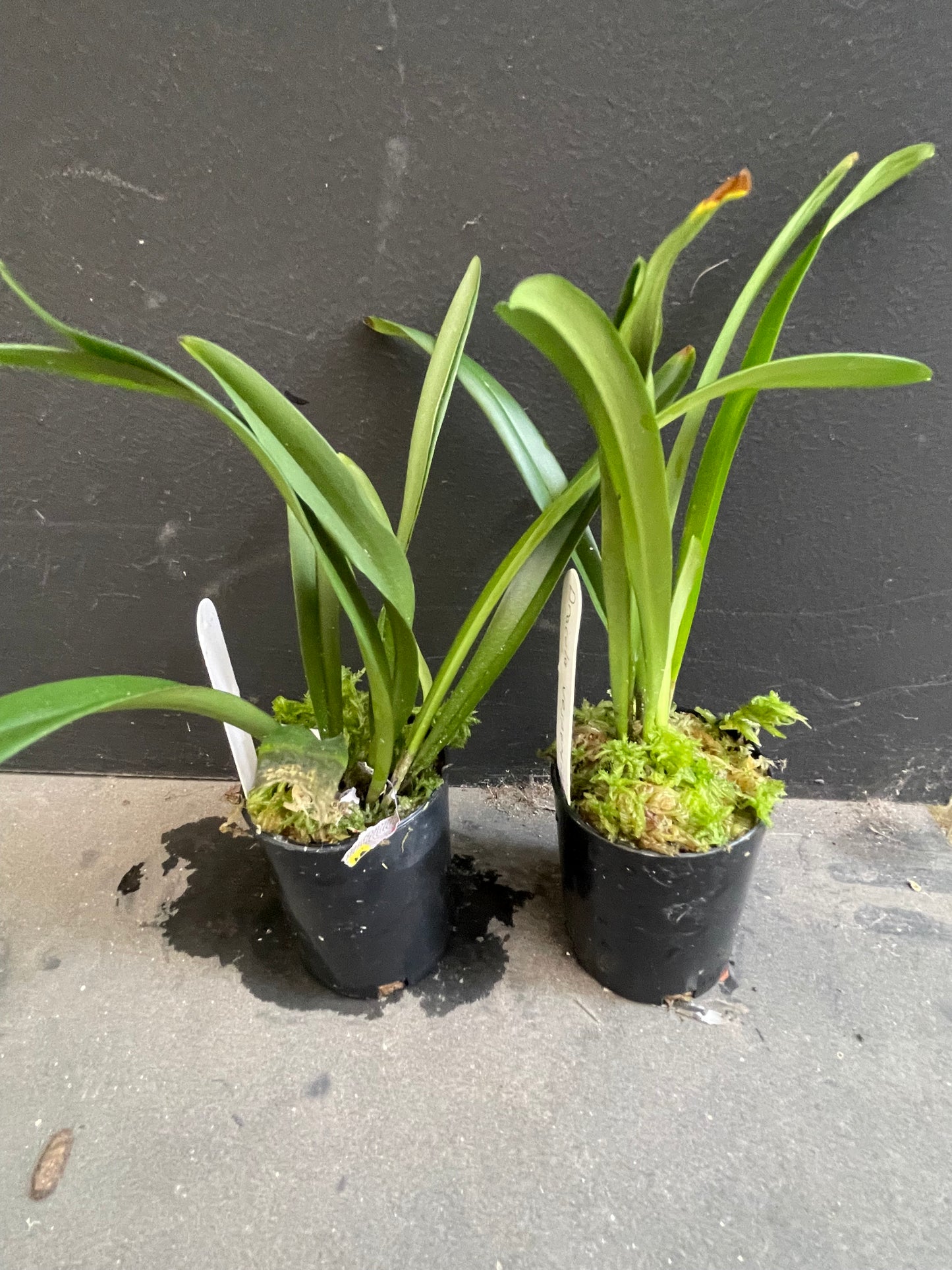1
/
of
2
Belgrave Orchids
Dracula vespertilio: Grow the Intriguing Bat Wing Orchid | Rare Epiphyte
Dracula vespertilio: Grow the Intriguing Bat Wing Orchid | Rare Epiphyte
Regular price
$125.00 AUD
Regular price
Sale price
$125.00 AUD
Unit price
/
per
Taxes included.
Shipping calculated at checkout.
Couldn't load pickup availability
Dracula vespertilio
Botanical Profile
- Origin: Found in the cool, moist cloud forests of Central America and the northwestern Andes (precise location for vespertilio may vary within this range).
- Leaves: Displays elegant, large, thin, and pleated (plicate) leaves with a prominent midrib. They grow in attractive clumps (caespitose) and are typically light to dark green.
- Flowers: Features truly remarkable, long-tailed, triangular flowers that often hang downwards. Like many Draculas, the flowers have evolved a unique appearance, sometimes resembling fungi, to attract their specific pollinators (fungus gnats). Bloom time can occur throughout the year under optimal conditions. (Specific colour, size, and fragrance details for vespertilio require direct observation).
- Growth Habit: A captivating epiphyte, naturally residing on trees. It grows in tufts from a short rhizome and lacks water-storing pseudobulbs. Its flower stalks frequently descend, making it ideal for basket culture.
Care Notes
- Light: Prefers shady environments with low to medium indirect light. Direct sunlight must be avoided to prevent leaf scorch. It can tolerate slightly brighter conditions if temperatures remain cool.
- Water: Consistent moisture is paramount; the growing medium must not dry out completely. Water thoroughly when the surface feels just barely damp. Using highly pure water (rainwater, distilled, or reverse osmosis) is essential, as this orchid is exceptionally sensitive to dissolved salts and minerals. Ensure excellent drainage.
- Humidity: Requires very high ambient humidity, ideally above 75-80%. Achieving this often necessitates a controlled environment like a terrarium or greenhouse, coupled with good air circulation to prevent mould.
- Temperature: A cool to intermediate grower. It thrives with daytime temperatures generally below 21-24°C (70-75°F) and cool nights, ideally dipping into the low 10s°C (low 50s°F). Prolonged exposure to temperatures above 24°C (75°F) can cause stress.
- Fertiliser: Feed extremely sparingly. Use a balanced orchid fertiliser diluted to quarter strength only occasionally (perhaps every few weeks to once a month) during active growth. Flush regularly with pure water to prevent salt accumulation.
- Repotting: Benefits from annual repotting in fresh, moisture-retentive but airy medium (like sphagnum moss mixed with fine bark or perlite). Mesh pots or hanging baskets are highly recommended to provide excellent aeration and accommodate downward-growing flower spikes.
Extra Notes
- Growth Rate & Difficulty: Cultivating Dracula orchids, including vespertilio, presents a significant challenge. They demand specific, stable conditions and are best suited for dedicated, experienced growers. Growth rate information wasn't specified, but many Draculas are considered slow growers.
- Unique Characteristics: Belongs to the subsection *Costatae* within the *Dracula* genus. Its primary challenges lie in maintaining the critical balance of high humidity, cool temperatures, pure water, and adequate air movement.
- Cautions: Extremely sensitive to poor water quality (high mineral content) and inadequate humidity or excessive heat. While not listed as specifically toxic, keeping ornamental plants out of reach of pets is always wise.




